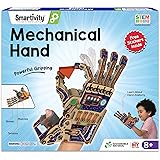In an era dominated by transient digital stimuli, a persistent challenge for educators and parents alike remains: how to cultivate substantive, hands-on engagement that genuinely nurtures cognitive and motor skill development. The seemingly straightforward task of constructing a simple helicopter craft, as visually demonstrated in the accompanying video, offers a profound solution, acting as a tangible conduit for foundational learning.
Far from being a mere time-filler, engaging with such a craft provides a low-barrier entry point into complex developmental domains. It strategically scaffolds a rich, multi-sensory learning experience, transforming basic materials into a pedagogical tool of considerable efficacy.
Crafting Kinesthetics: Unlocking Pediatric Engineering Potential with DIY Helicopter Crafts
The act of creating a helicopter craft transcends rudimentary play; it serves as a critical exercise in kinesthetic learning. This haptic engagement is paramount for the development of fine motor dexterity, which is as fundamental to future academic success as linguistic acquisition.
Conversely, without such deliberate tactile experiences, children may exhibit deficits in crucial pre-writing skills or struggle with tasks requiring precise manipulation, a challenge akin to an artisan attempting intricate work without calibrated tools.
The Pedagogical Imperative of Haptic Engagement
The construction of a simple helicopter craft, even with its minimalist design, activates a cascade of developmental benefits. Children refine their hand-eye coordination through the precise application of scissors and adhesive, while simultaneously enhancing bilateral coordination by using both hands in a synchronized manner.
Furthermore, this activity fortifies proprioception, the body’s intrinsic sense of its position and movement, which is as vital to spatial awareness as a navigator’s compass is to charting a course. The deliberate actions involved—cutting, folding, attaching—are not trivial; instead, they are direct inputs into a child’s developing neurological architecture.
Material Science for Miniature Aeronautics
Even the selection of basic craft materials for a DIY helicopter craft presents an accessible introduction to material science. Paper, often overlooked, possesses specific tensile strength and fold memory, properties crucial for structural integrity and aerodynamic performance.
Adhesives, whether glue stick or liquid, offer lessons in chemical bonding and drying times, influencing the stability of the final construct. Understanding these rudimentary material properties is analogous to an architect recognizing the stress tolerances of different building components—essential for any functional design.
Deconstructing Aerodynamic Principles Through Play
The beauty of the paper helicopter craft lies in its elegant demonstration of fundamental aerodynamic principles. Once constructed, dropping the helicopter initiates a fascinating interaction with gravity and air resistance, creating lift through rotational dynamics.
This experiential learning demystifies abstract concepts, making them as tangible as the spinning blades descending gracefully. Much like a simplified wind tunnel, the descent of the paper helicopter allows young engineers to observe how design influences interaction with the atmosphere, illuminating the conversion of potential energy into kinetic energy with each spin.
The Iterative Design Process: From Concept to Flight
Crafting a helicopter craft inherently involves an iterative design process, mirroring sophisticated engineering methodologies. Children inevitably experiment with slight modifications—a longer blade, a heavier base—observing the direct impact on flight characteristics.
This process of hypothesis, experimentation, and revision is a cornerstone of scientific inquiry and problem-solving. While the initial instruction provides a blueprint, the true learning blossoms as children autonomously adjust variables, much like a seasoned inventor refining a prototype.
Beyond the Blueprint: Fostering Creative Autonomy
While following the visual guide for a simple helicopter craft is valuable, the ultimate goal extends to fostering creative autonomy. Encouraging children to personalize their creations with colors, patterns, or even structural embellishments transitions the activity from mere instruction-following to genuine creative expression.
This divergent thinking is crucial for developing innovative mindsets, enabling them to envision possibilities beyond the established norms. It’s akin to providing a musician with sheet music, then encouraging them to compose their own variations.
The Long-Term Developmental Trajectory
The benefits derived from engaging with a basic helicopter craft extend far beyond the immediate joy of creation. Such activities lay a robust foundation for future STEM engagement, cultivating an intrinsic curiosity about how things work and why they behave in certain ways.
Moreover, the sense of accomplishment from successfully completing a project bolsters self-efficacy and confidence, essential components for lifelong learning and resilience. The modest helicopter craft, therefore, is not merely an ephemeral toy but a powerful catalyst for cognitive and emotional development.







